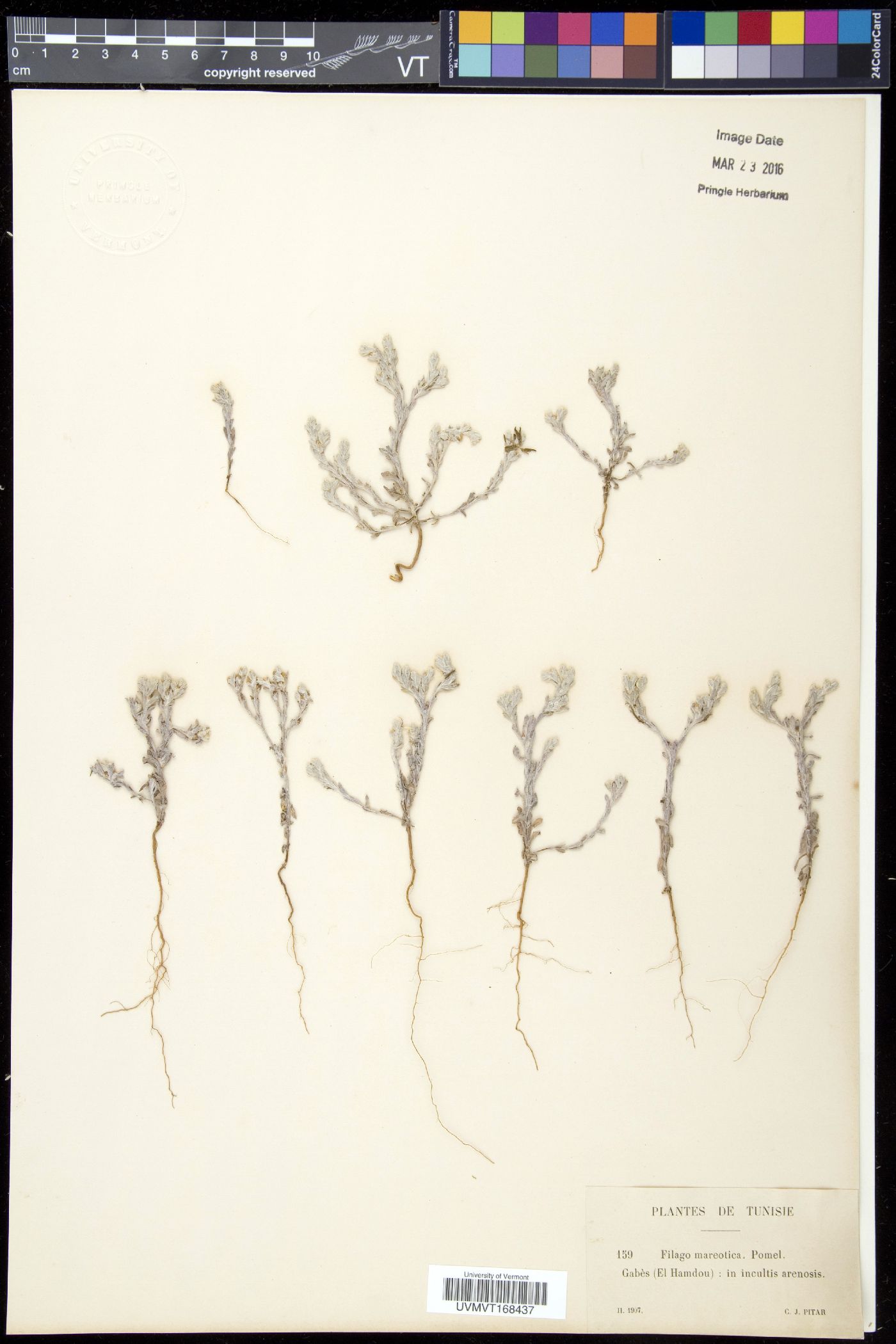Filago
|
Family: Asteraceae |
Annuals, (1-)5-40 cm. Stems [0] 1, ± erect, or 2-7[-10+], ± ascending [prostrate]. Leaves cauline [basal]; alternate; blades lanceolate to oblanceolate [spatulate or ± round]. Heads in (dense, spheric [hemispheric]) glomerules of [2-]8-35+ in ± dichasiiform arrays [borne singly]. Involucres 0 or inconspicuous. Phyllaries usually 0, rarely 1-4, unequal (similar to paleae). Receptacles cylindric to clavate (heights [2-]5-15 times diams.), glabrous. Pistillate paleae (except usually innermost) ± persistent [falling], ± erect to ascending; bodies with 5+ nerves (nerves ± parallel, obscure), lanceolate to ovate, open to ± folded (each at most enfolding, not enclosing a floret); wings erect to recurved (apices acuminate to aristate). Innermost paleae usually all pistillate, in some species bisexual and pistillate, persistent or tardily falling, usually 5, erect to ascending [spreading] (scarcely enlarged) in fruit, shorter than other pistillate paleae; bodies lanceolate to ovate. Pistillate florets [12-]27-40+. Functionally staminate florets 0. Bisexual florets (1-)2-9(-11); corolla lobes 4, ± equal. Cypselae brown, ± monomorphic: terete to ± compressed, cylindric to ± obovoid, usually straight, not gibbous, faces papillate to muricate [glabrous, smooth], dull; corolla scars apical [subapical]; pappi: outer pistillate 0, inner pistillate and bisexual of [3-]13-21 bristles (visible in heads). x = 14. See discussion of Filagininae following the tribal description (p. 385). The name Filago has been used also for the genus now usually recognized as Evax Gaertner. Here Filago, in the narrow sense, contains twelve Old World species. Six species long included in Filago in North America are here separated as Logfia.
Heads ±numerous, disciform, white or whitish; invol scanty or none, its bracts (when present) imbricate, scarious, resembling the bracts of the cylindric or obconic to merely convex receptacle; outer fls pistillate, fertile, filiform-tubular, in several series, the outermost of these epappose and each subtended and partly enclosed by a concave or boat- shaped bract, the others bractless and with a pappus of capillary bristles; central fls 2-11, appearing perfect but often sterile, with capillary pappus; anthers shortly tailed; achenes small, scarcely nerved; low white-woolly annuals with alternate, entire lvs. 10+, Eurasia, n. Afr. Gleason, Henry A. & Cronquist, Arthur J. 1991. Manual of vascular plants of northeastern United States and adjacent Canada. lxxv + 910 pp. ©The New York Botanical Garden. All rights reserved. Used by permission. |

